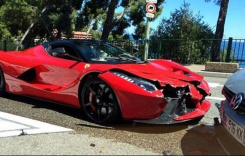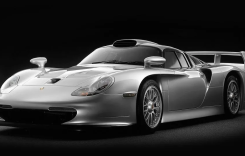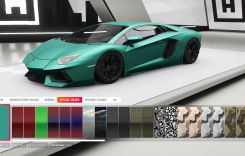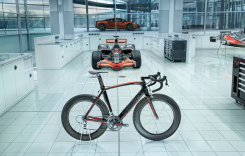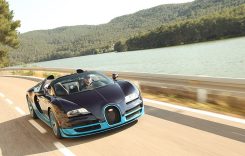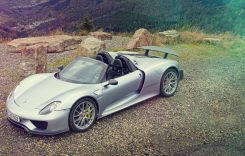KTM is doing big things in the on-road market right now, one of which is expanding its selection of smaller displacement bikes. Not long ago we got our first taste of the smallest street-going powerplant KTM is offering in the States, the 373cc Single that is shared in the RC390 and 390 Duke, when we tested the RC model in Italy. I said it then and I’ll say it again – small bikes are serious business and serious fun. The sporty ergos of the RC390 may not be for everyone though, so KTM offers a more comfortable and upright riding position with the similarly-powered Duke. KTM shipped a select group of media outlets to Thailand for its Duke It! Press event to get a taste of the soon-to-be-available in the US 390 Duke along with its smaller and bigger siblings.

(Above) The 2015 390 Duke features a steel trellis frame, steel subrame and WP monoshock. (Below) The Duke shares much with the RC390 including a spunky, fuel-injected Single that delivers 44hp.
While it is easy to classify the 390 Duke as an entry-level machine, both in size and cost, the naked machine is more than capable of entertaining anyone that swings a leg over its 31.5-inch-high seat. The Duke shares much with the RC390 including a spunky, fuel-injected Single that delivers 44 horsepower. Pull the trigger on the 390 Duke and you will be rewarded with a grunt off the bottom that belies the fact it’s working with just one piston. Midrange is also better than expected and up on top the power pulls nearly all the way to the 10,000 rpm redline. On the dusty, oily and crud-covered streets of Thailand, it’s all you need. The power is controllable but sporty when you whack the throttle to the stop. There’s enough power on tap to propel the aerodynamically challenged Duke to 159 kph or 99 mph. Will it hit the ton? Most likely, but with my rotund hide behind the bars one less is all it has.
When the pace was upped, during a 200-plus-mile, eight-hour ride around Thailand’s Khao Yai National Park and surrounding lowland, the 390 Duke proved a great mount. The engine is surprisingly smooth except for a small range on the tachometer from 4500 to 5000 rpm. There the vibes are noticeable, but not annoying. The sweet spot is right around 75 mph in top gear where the engine settles into a nice groove.
Rowing through the 6-speed transmission is easy, yet not completely solid feeling. While we never missed shifts or found false neutrals, it just doesn’t give a nice snick-snick transition. The cable-actuated clutch is slightly heavy but not overly so. Gear spacing is sorted and third gear will work for tooling around the town, thanks to the engine’s torque.
Up in the mountain area of Khao Yai the roads clean up and the curves are plentiful, and the 390 did not disappoint. Although the Duke’s 25-degree rake and 3.9 inches of trail is less aggressive than the RC390, handling is still sharp and precise. With a dry weight of just 306 pounds, tossing the 390 into a turn is drama free. It holds a line well but can tighten a line without protest.

On the track, the fun continues with stable manners that keep the fear factor low. Bonanza International Speedway’s track surface mirrors Thailand’s streets with smooth sections mixed with tooth-rattling mid-corner bumps that would test the best of suspension systems. The Duke’s budget-conscious non-adjustable WP suspension holds up to the task with more composure when flogged than I expected. The 43mm inverted fork is soft for my 225 pounds, but even with a fair amount of dive when hard on the brakes it follows pavement irregularities well. The pre-load adjustable rear WP shock also sticks to the pavement and doesn’t fall apart when leaned over and taxed. Overall the suspension is soft for a larger rider, but looks to be well calibrated for young or new riders. Even so, KTM’s “Ready to Race” DNA is evident.
Braking duties are handled by ByBre calipers, designed by Brembo and manufactured in India. A single four-piston radial-mount at the front clamps on a 300mm rotor and a single-piston caliper works with a 230mm rear disc. ABS by Bosch is standard on the 390 and is either on or off. Power from the ByBre units don’t rival the Brembo stoppers on the bigger Dukes, but are plenty beefy for a motorcycle that rings in at $4999. Initial bite is solid and the feel is excellent, however, when you really get deep into the binders the power seems to reach a plateau. No matter how much pressure you add, the power does not increase. However, this limitation arrives at the envelope of the Duke’s performance. ABS works well, especially on the street and the system only steps in at a high level. With the high-spec Pirelli Diablo Rosso II tires it takes some ham-fisted maneuvers to get the ABS to activate on dry, clean pavement. Even on wet or dirty pavement the Rosso IIs give plenty of grip and using the ABS would be a rare occurrence.
The rider’s area of the 390 Duke is roomy with a comfortable reach to the standard aluminum handlebar. Legroom is plentiful for an average height pilot, with footpegs positioned further back than expected from a naked bike. This gives the 390 commendable corning clearance though it’s not at the level of the RC390. After two days in the saddle, I had no complaints with the seat comfort. There is plenty of room to move around and only after some really long stints would I find a need to stand up for a break.
My time on the KTM 390 Duke has only further confirmed that you don’t need a wheelbarrow full of horsepower to have a good time. Just give me a willing engine, a well-sorted chassis and some good looks and I’m just fine. The 390 Duke has all of these requirements in spades and a price point that leaves plenty of change in your pocket. It’s a great motorcycle for anyone, not just beginners or those on a budget.

